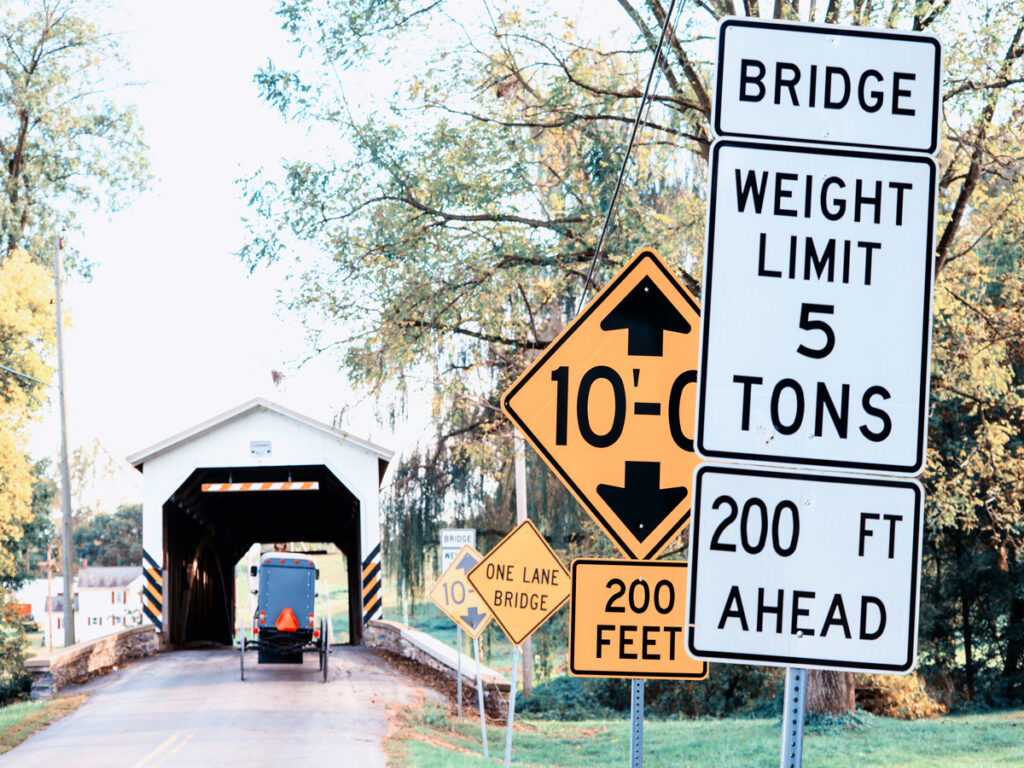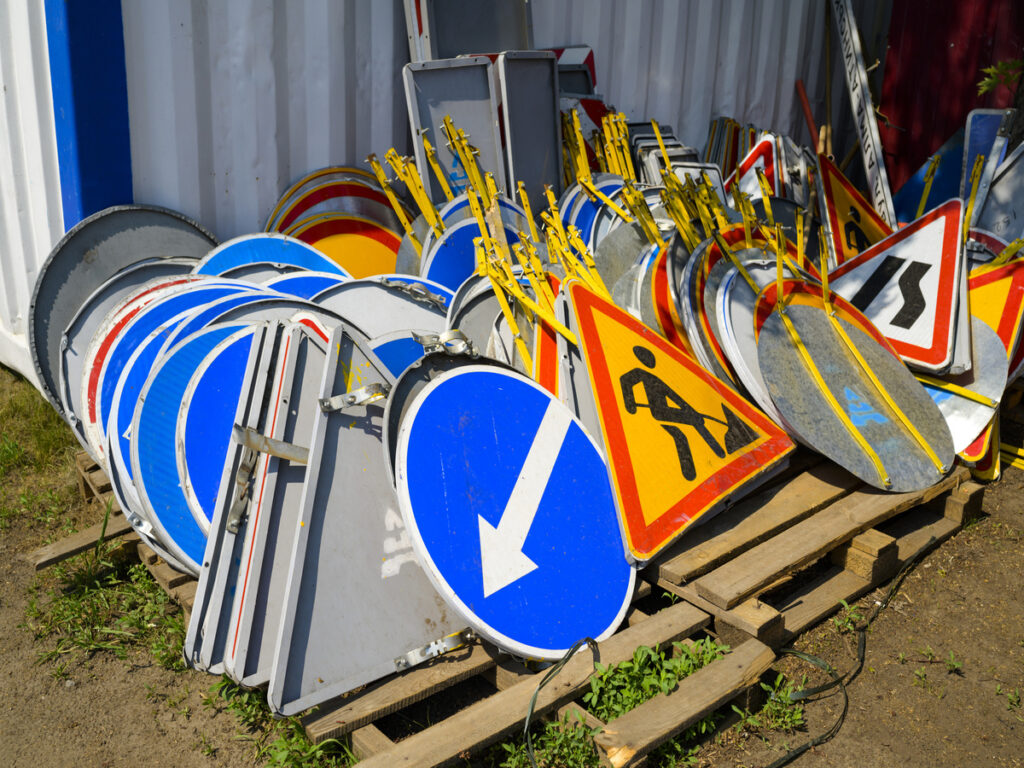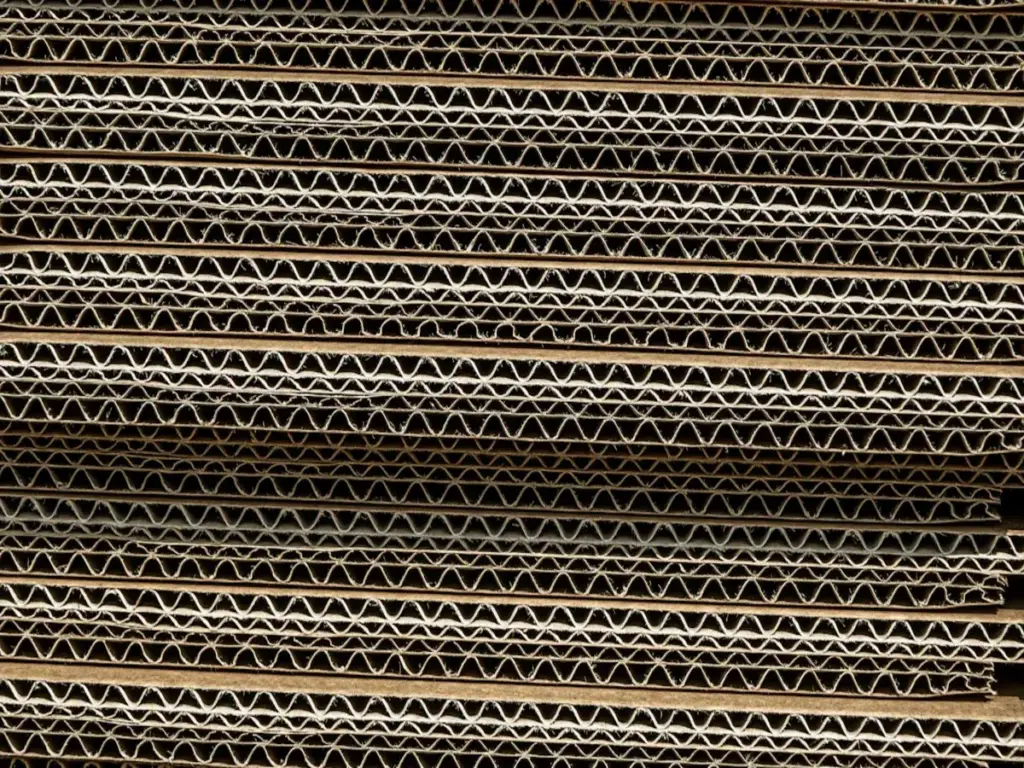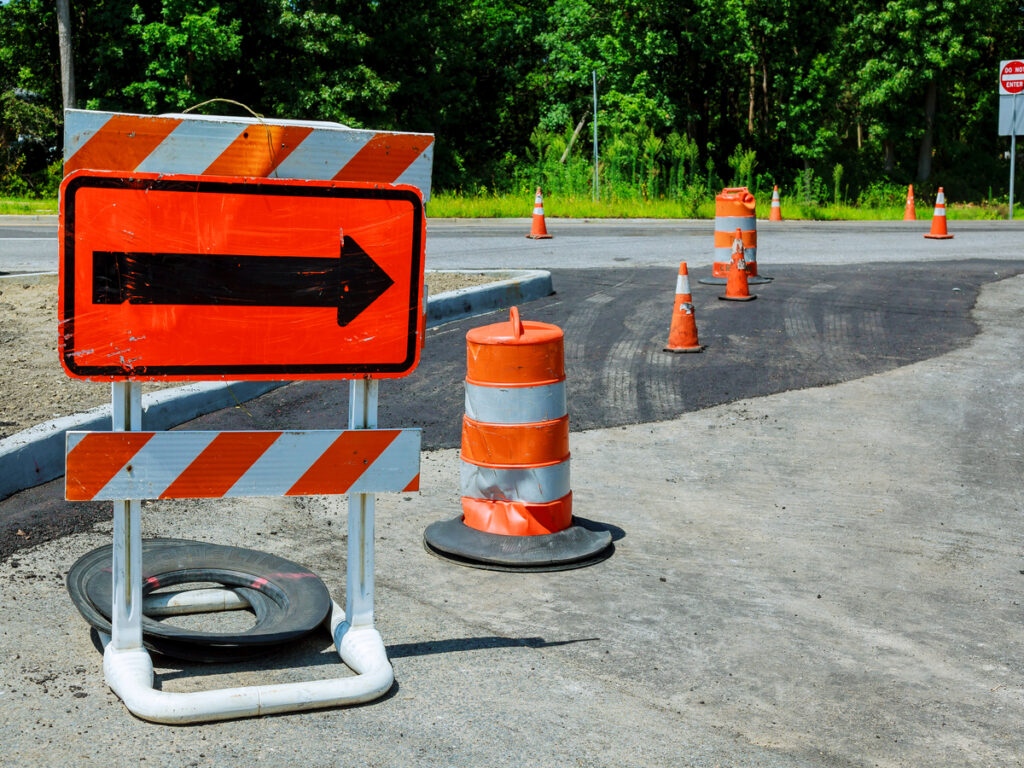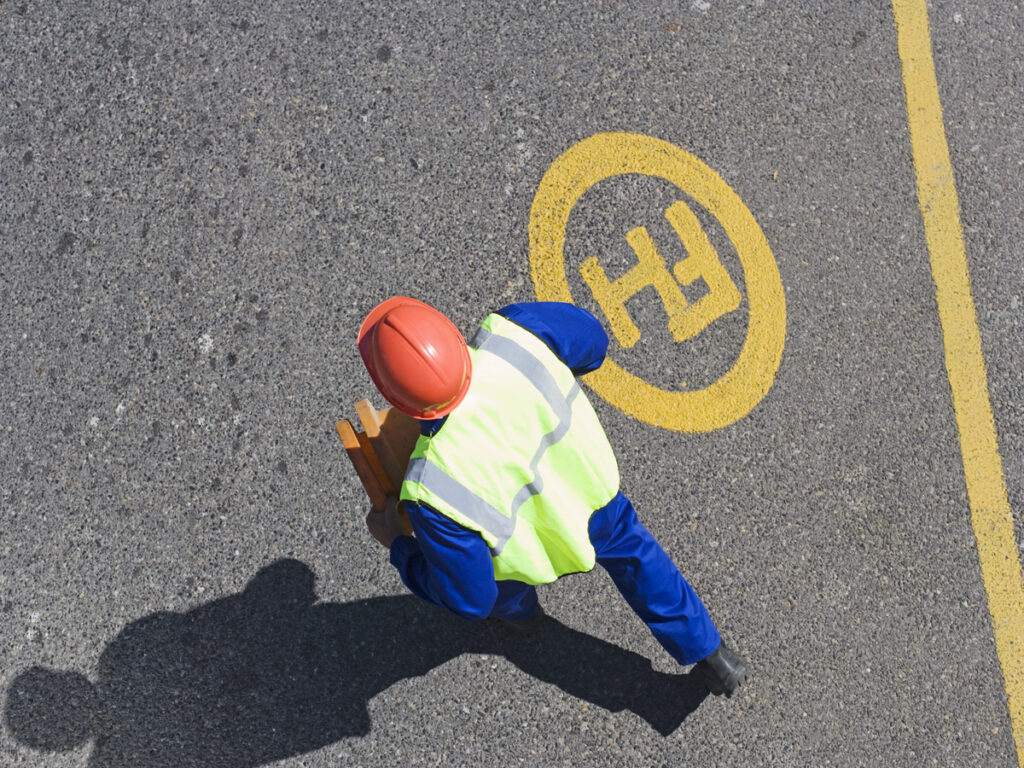
Traffic cone plays a crucial role in road safety, 건설 구역과 우회를 통해 운전자와 보행자를 안내합니다. 이러한 교통 원뿔의 효과는 크로스 원뿔 건설에 사용되는 재료에 크게 달라집니다.. 세 가지 필수 자료 가이 분야를 지배합니다: PVC, PE, 그리고 고무. 각각은 고유 한 이점을 제공합니다. PVC provides durability and weather resistance, ~하는 동안 PE is known for its lightweight nature and impact resistance. 고무, 반면에, 높은 내구성과 유연성을 제공합니다. 올바른 자료를 선택하면 다양한 조건에서 수명과 효과가 있습니다..
PVC in Traffic Cone Manufacturing
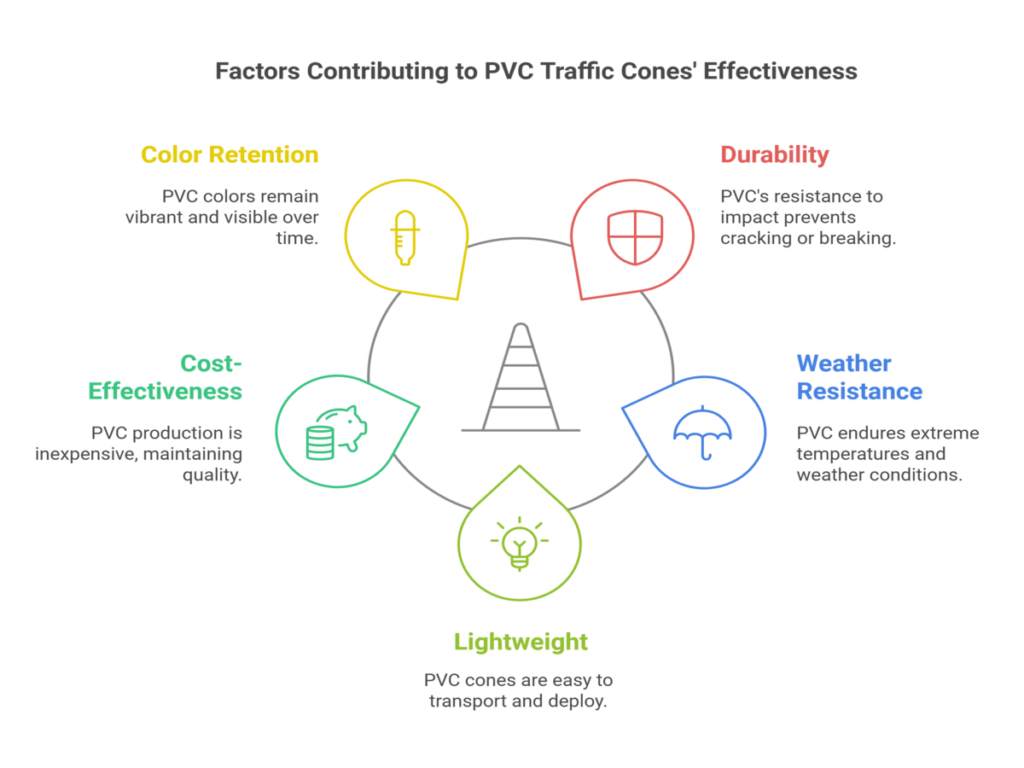
Properties of PVC
Durability and Flexibility
When you consider the materials used in traffic cone construction, PVC 내구성과 유연성이 돋보입니다.. This material can withstand various environmental conditions, 실외 사용에 이상적입니다. PVC traffic cones are known as “충돌 할 수없는 교통 원뿔” because they can bend when hit by a vehicle, reducing damage to both the cone and the car. This flexibility ensures that the cones retain their shape over time, providing reliable service for years.
날씨 저항
PVC 우수한 기상 저항을 제공합니다, which is crucial for 트래픽 콘 exposed to the elements. These cones resist moisture and UV rays, 가혹한 햇빛 아래에서도 밝은 오렌지색을 유지합니다. This feature ensures that the cones remain visible and effective in guiding traffic, regardless of the weather conditions.
Advantages of Using PVC
비용 효율성
One of the significant advantages of PVC is its cost-effectiveness. PVC traffic cones are affordable to produce, making them a popular choice for large-scale traffic management projects. The material’s durability also means that you won’t need to replace the cones frequently, saving money in the long run.
Versatility in Design
PVC allows for versatility in design, enabling manufacturers to create different types of traffic cones to suit various needs. Whether you need cones with reflective strips for improved visibility in low-light situations or cones with rubber bases for added stability, PVC can accommodate these requirements. This adaptability makes PVC a preferred choice for producing different types of traffic cones.
Applications in Traffic Cones
일반적인 용도
PVC traffic cones are commonly used in road construction zones, 주차장, 이벤트 관리. Their high visibility and durability make them suitable for guiding drivers and pedestrians safely through these areas. The plastic traffic cones’ lightweight nature also makes them easy to transport and set up, enhancing their practicality.
Specific Scenarios
In specific scenarios, such as nighttime roadwork or adverse weather conditions, PVC traffic cones prove invaluable. Their reflective bands ensure high visibility, while their robust construction withstands the challenges posed by such environments. 이러한 기능은 PVC an essential material in 교통 원뿔 유형 designed for demanding applications.
PE in Traffic Cone Manufacturing
폴리에틸렌, commonly known as PE, plays a vital role in the production of traffic cones. This material is a significant component of the global plastics market, highlighting its importance in various applications, including traffic management.
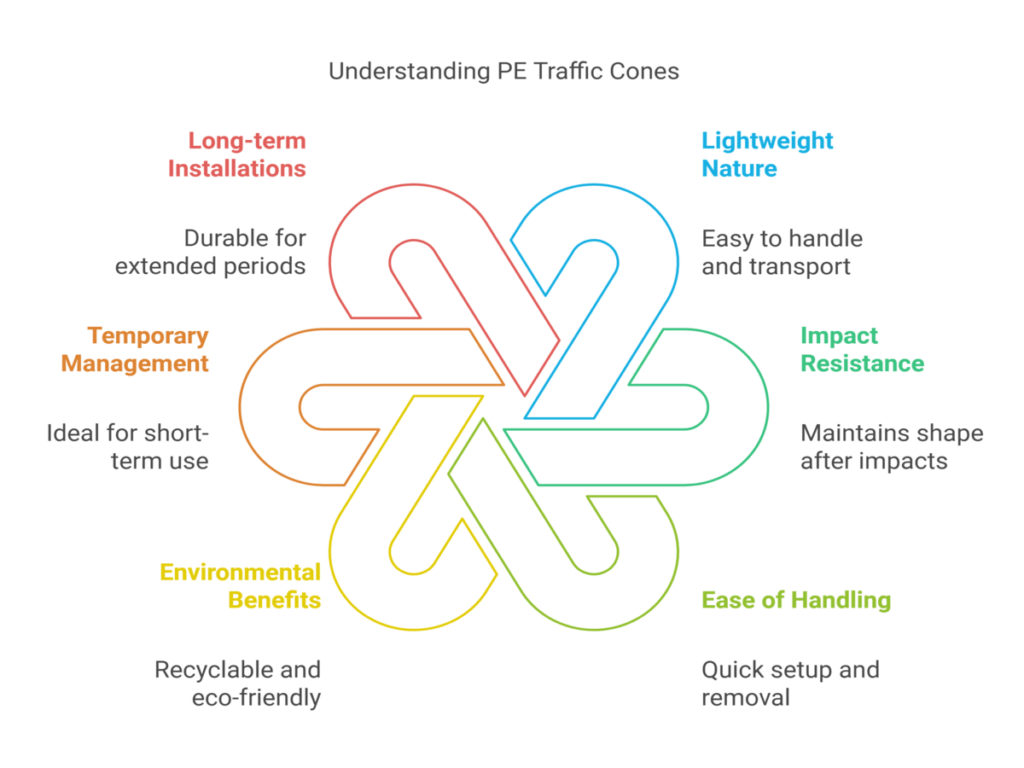
Properties of PE
Lightweight Nature
PE stands out for its lightweight nature. You can easily handle and transport PE 트래픽 콘 due to their reduced weight. This property makes them ideal for situations where quick deployment and removal are necessary. Unlike regular plastic traffic cones, PE cones offer ease of use without compromising on performance.
충격 저항
Another remarkable property of PE is its impact resistance. When vehicles accidentally hit these plastic traffic cones, they absorb the impact effectively, 피해 최소화. This feature ensures that PE traffic cones maintain their shape and functionality even after repeated impacts, 트래픽 관리를위한 안정적인 선택입니다.
Advantages of Using PE
Ease of Handling
Handling PE traffic cones is straightforward due to their lightweight design. You can quickly set them up or remove them as needed, which is particularly beneficial in dynamic traffic situations. This ease of handling reduces the time and effort required for traffic management tasks.
환경 적 이점
PE offers environmental benefits as well. This material is recyclable, 지속 가능성 노력에 기여합니다. By choosing PE traffic cones, you support eco-friendly practices and reduce waste, aligning with global initiatives to minimize environmental impact.
Applications in Traffic Cones
임시 트래픽 관리
PE traffic cones excel in temporary traffic management scenarios. Their lightweight and durable nature make them perfect for short-term projects or events. You can rely on traffic cone to provide clear guidance and visibility, 운전자와 보행자 모두의 안전 보장.
Long-term Installations
For long-term installations, PE traffic cones offer durability and resilience. They withstand various weather conditions and maintain their effectiveness over extended periods. This makes them suitable for permanent or semi-permanent traffic management solutions, where reliability is crucial.
고무 in Traffic Cone Manufacturing
Rubber plays a pivotal role in the manufacturing of rubber traffic cones, offering unique properties that make it an ideal choice for specific applications. Understanding these properties and advantages can help you appreciate why rubber is a preferred material for certain traffic cone types.
고무의 특성
High Durability
Rubber stands out for its high durability. This material can withstand repeated deformation and shock absorption, making it perfect for environments where traffic cones face constant impact. 다른 재료와 달리, rubber maintains its integrity even under heavy use, ensuring that the cones remain functional over time.
Flexibility and Grip
The flexibility of rubber allows rubber traffic cones to bend without breaking, providing resilience in various conditions. This flexibility also enhances grip, ensuring that the rubber traffic cones stay in place even on slippery surfaces. You can rely on rubber traffic cones to maintain their position, offering consistent guidance and safety.
Advantages of Using Rubber
Stability in Various Conditions
Rubber traffic cones offer stability across different environments. Whether in wet or dry conditions, these cones provide excellent traction, reducing the risk of slipping or toppling over. This stability makes them suitable for heavy-duty applications where regular traffic cones might not suffice.
재활용
Rubber is recyclable, 환경 지속가능성에 기여. 고무 트래픽 콘을 선택하여, you support eco-friendly practices, reducing waste and promoting the reuse of materials. This recyclability aligns with global efforts to minimize environmental impact, making rubber a responsible choice for traffic management.
Applications in Traffic Cones
Heavy-duty Traffic Management
In heavy-duty traffic management scenarios, rubber traffic cones excel. Their durability and stability make them ideal for areas with high vehicle flow or construction zones. You can trust these cones to withstand the demands of such environments, 안전 및 가시성 보장.
High-traffic Areas
Rubber traffic cones are particularly effective in high-traffic areas. Their grip and flexibility ensure they remain in place, providing reliable guidance to drivers and pedestrians. These cones are essential in maintaining order and safety in bustling locations, where different types of traffic cones might struggle to perform.
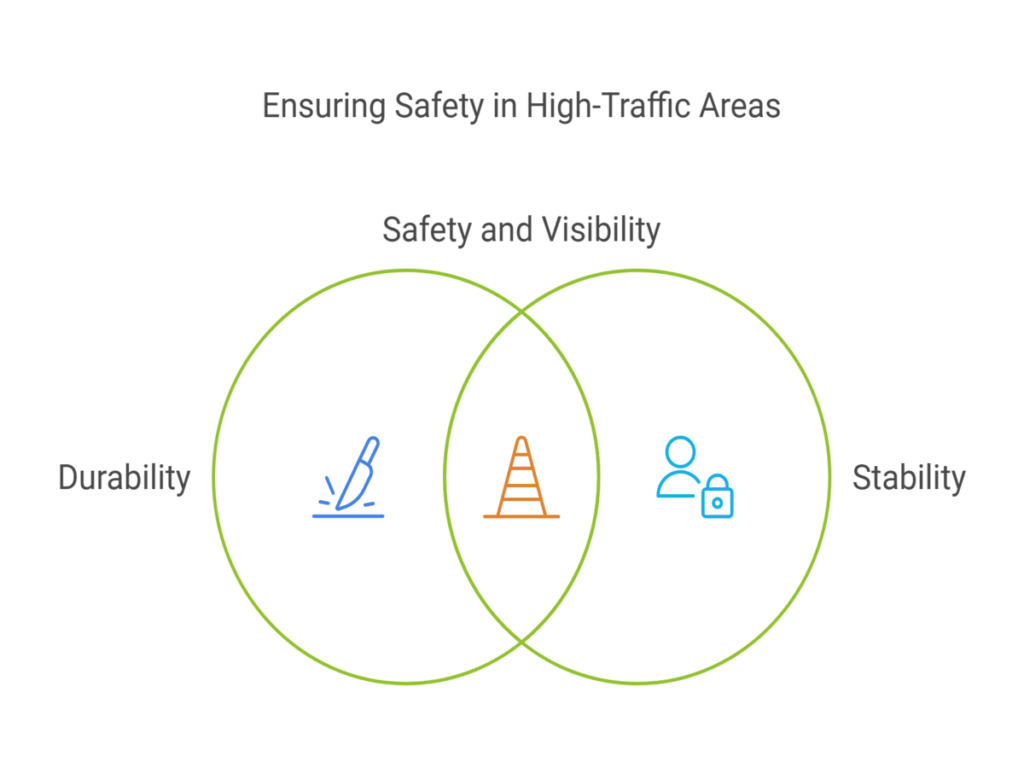
Comparison of Materials Used in Traffic Cone Construction
내구성과 장수
When choosing materials for traffic cone construction, durability and longevity are key factors. PVC 그리고 고무 are known for their high durability, making them suitable for long-term use. PVC’s weather resistance ensures that it maintains its color and shape over time, 가혹한 조건에서도. 고무, with its flexibility and grip, withstands repeated impacts and deformation, making it ideal for heavy-duty traffic cones. PE, while lightweight, offers excellent impact resistance, ensuring that the cones remain functional after multiple hits. Each material provides unique benefits, but rubber often outperforms others in demanding environments due to its exceptional resistance to abrasion and impact.
비용 고려 사항
Cost plays a significant role in selecting materials for traffic cone construction. PVC is often the most cost-effective option due to its affordability and durability. You can produce PVC traffic cones at a lower cost, making them a popular choice for large-scale projects. PE, with its lightweight nature, also offers cost benefits by reducing transportation expenses. 고무, 처음에는 더 비싸지 만, provides long-term savings due to its durability and recyclability. When considering cost, it’s essential to balance initial expenses with the longevity and performance of the traffic cones.
환경 영향
Environmental considerations are increasingly important in traffic cone construction. PE and rubber offer environmental benefits due to their recyclability. By choosing these materials, you support eco-friendly practices and contribute to sustainability efforts. 에바, although less common, also provides versatility and environmental advantages. PVC, 내구성이있는 동안, poses challenges in terms of recyclability. 하지만, advancements in recycling technologies are helping to mitigate these issues. When selecting materials, consider the environmental impact and choose options that align with global sustainability initiatives.
Choosing the Right Material for 다양한 유형의 트래픽 콘
Selecting the right material for traffic cones involves understanding the specific needs of your application. Each material offers distinct advantages, making it suitable for different types of traffic cones. By considering various factors, you can ensure that your choice meets the demands of your environment and enhances safety.
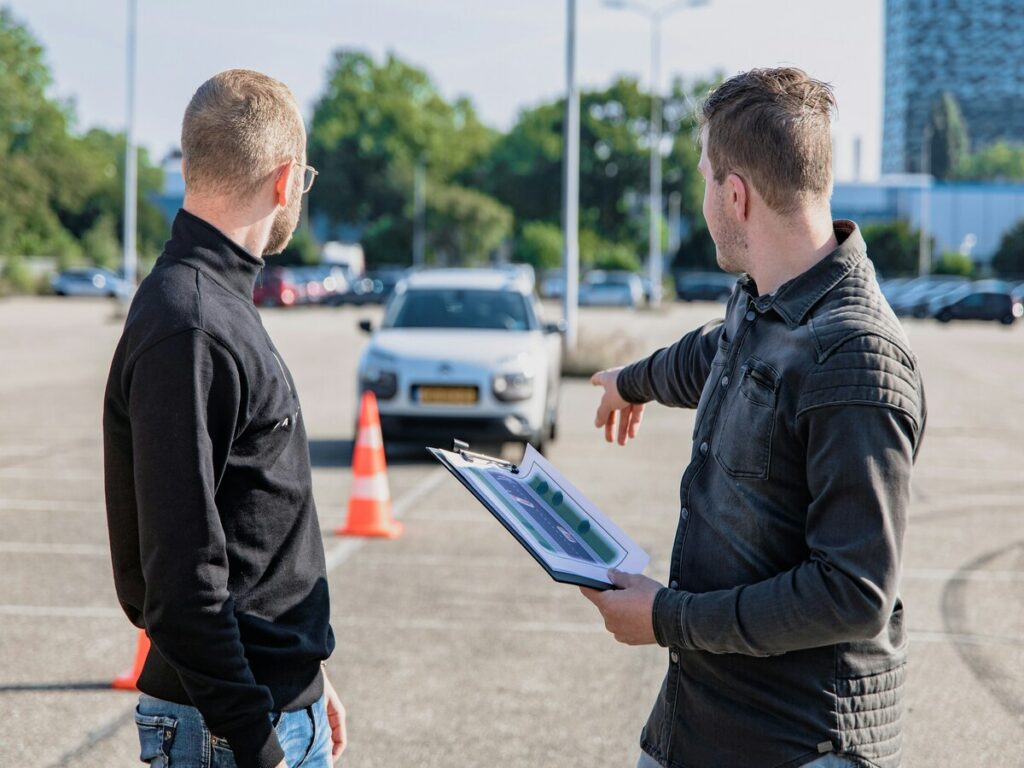
고려해야 할 요소
- 내구성과 장수: You should assess how long the traffic cone will last in its intended environment. PVC and rubber are known for their durability, 장기 사용에 이상적입니다. 고무, 특히, excels in heavy-duty applications due to its resistance to abrasion and impact.
- 비용: Consider the budget for your project. PVC is often the most cost-effective option, offering affordability and durability. PE, with its lightweight nature, can reduce transportation costs. Although rubber may have a higher initial cost, its longevity and recyclability can lead to savings over time.
- 환경 영향: Evaluate the environmental implications of your choice. PE and rubber offer recyclability, supporting eco-friendly practices. While PVC poses challenges in recycling, advancements in technology are helping to address these issues. Choosing materials that align with sustainability initiatives is crucial.
- 시계: Ensure that the material maintains high visibility under various conditions. PVC’s weather resistance helps it retain its bright color, while reflective bands can enhance visibility in low-light situations.
- Specific Application Needs: Different scenarios require different types of traffic cones. 예를 들어, heavy-duty traffic cones made from rubber are suitable for high-traffic areas, while PE cones are ideal for temporary setups due to their ease of handling.
Application-specific Recommendations
- Regular Traffic Cones: For general use, such as guiding traffic in parking lots or during events, PVC cones offer a balance of cost-effectiveness and durability. Their flexibility and weather resistance make them a reliable choice.
- Heavy-duty Traffic Cones: In construction zones or areas with high vehicle flow, rubber cones provide the necessary durability and stability. Their grip and flexibility ensure they remain in place, offering consistent guidance.
- Temporary Installations: PE cones are perfect for short-term projects. Their lightweight nature allows for quick deployment and removal, making them practical for dynamic traffic management.
- Specialized Traffic Cone Types: For unique applications, consider EVA cones. Although less common, EVA provides versatility and environmental benefits, making it suitable for specific scenarios where traditional materials may not suffice.
By carefully evaluating these factors and understanding the specific requirements of your application, you can select the most suitable material for your traffic cones. For top-quality traffic management solutions, including durable cones and other traffic control devices, 방문하다 OPT 표시. Our products are designed to enhance the effectiveness and longevity of your traffic management needs.
In the realm of traffic cone manufacturing, choosing the right materials is crucial. PVC, PE, and rubber each offer unique benefits for different types of traffic cones. PVC provides a durable PVC material that ensures longevity and high visibility. PE, known for its impact-resistant plastic properties, excels in temporary setups. 고무, with its heavy-duty nature, suits high-traffic areas. EVA traffic cones add versatility to the mix. By selecting the appropriate material, you ensure maximum visibility and effectiveness, 다양한 환경에서 안전 향상. Understanding these types helps you make informed decisions for your safety cone needs.

